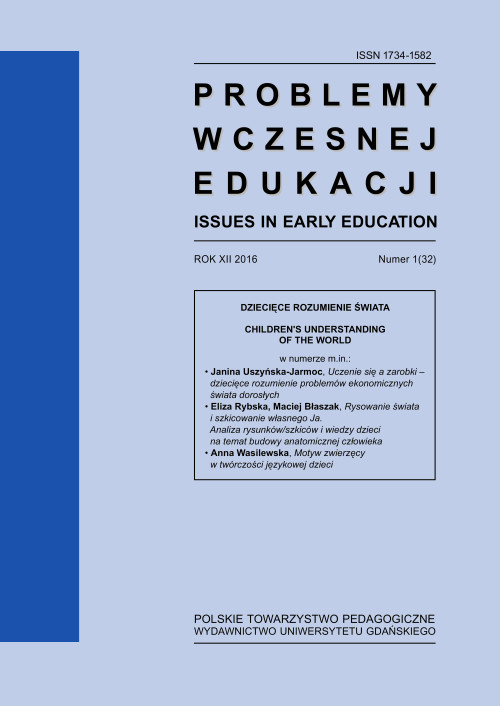Analiza rysunków/szkiców i wypowiedzi werbalnych dzieci na temat budowy anatomicznej człowieka
DOI:
https://doi.org/10.5604/01.3001.0008.5633Słowa kluczowe:
sieć domyślna, sieć wykonawcza, sieć istotności, rysunki, szkice, subiektywnośćAbstrakt
The article discusses the results of an analysis of student’s drawings/sketches and interviews about the internal structure of the human body. The problems discussed in this article have an interdisciplinary approach. Our goal was not a psychological analysis of children’s drawings, but the presentation of such productions in the light of two dimensions (drawing and sketching) and the justification of highlighting them in relation to research in the field of cognitive science. Hence, the analysis of graphic productions is presented from a didactic dimension (e.g. the scale used to classify children’s graphical products), biological (anatomy) and cognitive – classifying them as drawings or sketches. The latest findings from neuroscience suggest that there are three networks involved in our brain – default, executive, and salient. Each of these networks generates different energy costs, involves different ways of processing information, or different effects resulting from its recruitment. The authors claim that the graphic may also reflect the involvement of one of the networks. While drawings are produced by using the executive network, sketches are the results of implementing a default network. Both drawings and sketches make it possible to explore the children’s conceptions on a given topic. The differences between them are revealed when within this product, one might (or might not) find a reflection of subjectivity. While the executive network run by drawing allows one to reflect a concept, to answer a question, the inclusion of the default network allows one to run the autobiographical memory, to ask questions, and to search for an answer.

 Uniwersyteckie Czasopisma Naukowe
Uniwersyteckie Czasopisma Naukowe





